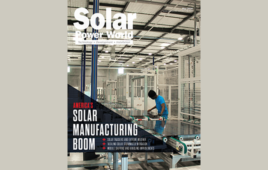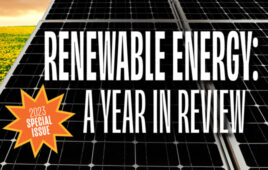Respect your elders
After spending the last seven years writing about solar, I’m close to securing my industry senior discount card. There are plenty of veterans that have put in more time than me, but there are many more people and companies entering the solar market each year. That’s not all bad; the solar industry is still young, and better products are developed with experience. But it’s also refreshing to work with companies that have even 10 years of field-data to compare.
I recently had the chance to visit Array Technologies’ headquarters in Albuquerque, New Mexico, and see how longevity has allowed it to stand out in a dense solar crowd. Founder Ron Corio started the company in 1989 and has built it into one of the top solar tracking system manufacturers today. Those decades of experience are invaluable when it comes to accurate bankability reports. DNV GL contributed a summary of its white paper “Tracker Bankability Reviews: Guidelines for Stakeholders” on pg. 42 describing why access to significant technical data ensures a comprehensive assessment of a tracking system’s risks. It’s easier to trust a product’s quality and durability if it’s been out there in the elements, rather than relying on accelerated testing.
Of course, new tracker configurations are entering the market, and many will make lasting impacts on the industry. But it’s also difficult to ignore the significance of 29 years of production and development experience. Secure with its current market share, Array Technologies is looking toward the future of trackers and their compatibility with bifacial modules. The company is working with a national laboratory to fully test its systems with bifacial panels and hopes to have concrete conclusions about the emerging technology by the end of the year.
Rather than use two modules in portrait-mode positioned on either side of the central torque tube, Array has decided to keep its one-portrait system, even though the torque tube will cast shade on the back of the bifacial module. The shading losses were considered too insignificant, and a two-portrait system would require more material, more engineering and more installation effort. Partnering with the national lab allows Array to validate its testing and make important decisions, like sticking with oneportrait designs. It was great to see a seasoned solar company still developing products with the installer and system owner’s best interests in mind.
Who else has this solar manufacturing thing figured out? I’d love to learn more about your product. See you on the exhibit floor of Solar Power International.
Editor in Chief
Kelly Pickerel





Is there a paper copy of this magazine?
It will be on stands at Solar Power International, and you can subscribe for free here: https://www.solarpowerworldonline.com/subscribe-to-solar-power-world-magazine/